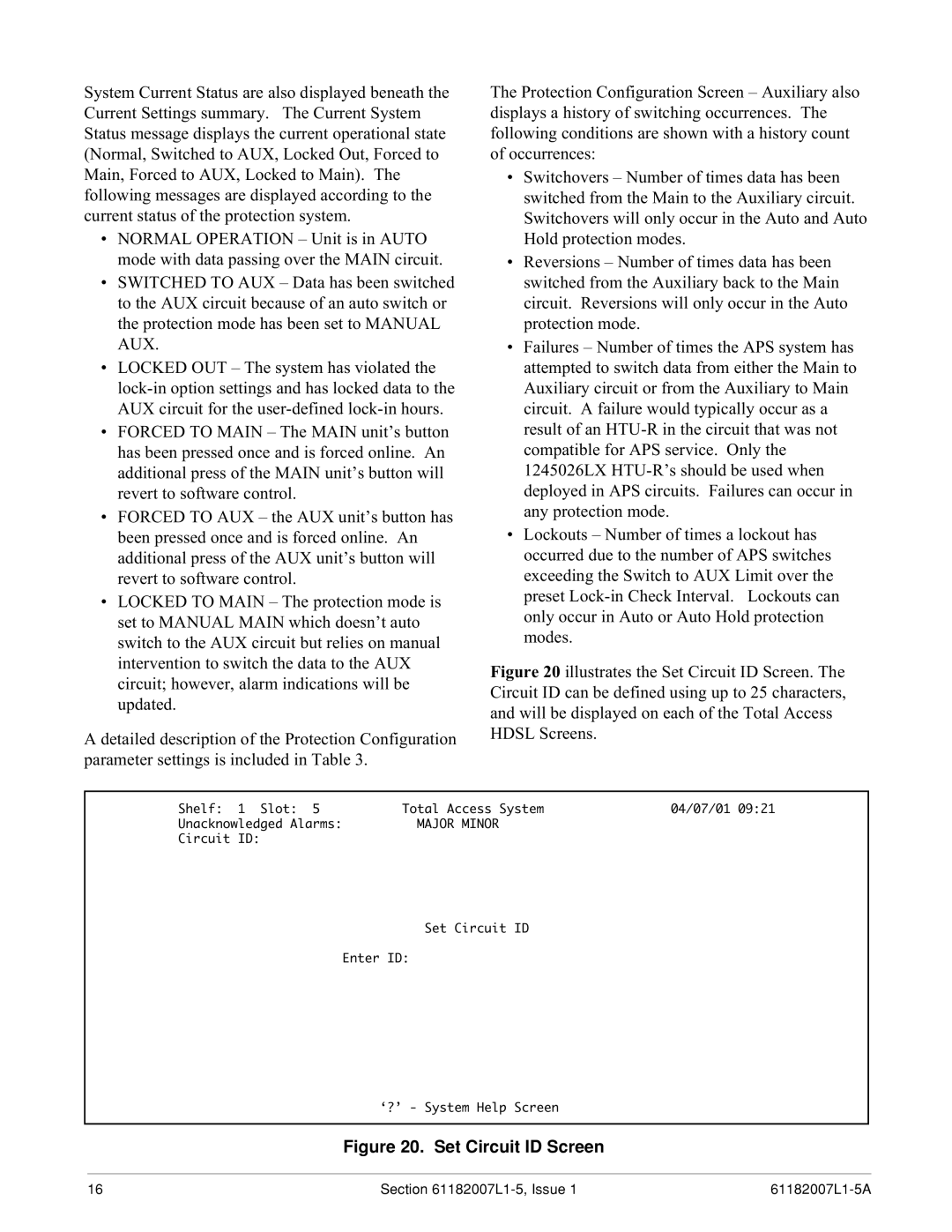
System Current Status are also displayed beneath the Current Settings summary. The Current System Status message displays the current operational state (Normal, Switched to AUX, Locked Out, Forced to Main, Forced to AUX, Locked to Main). The following messages are displayed according to the current status of the protection system.
•NORMAL OPERATION – Unit is in AUTO mode with data passing over the MAIN circuit.
•SWITCHED TO AUX – Data has been switched to the AUX circuit because of an auto switch or the protection mode has been set to MANUAL AUX.
•LOCKED OUT – The system has violated the
•FORCED TO MAIN – The MAIN unit’s button has been pressed once and is forced online. An additional press of the MAIN unit’s button will revert to software control.
•FORCED TO AUX – the AUX unit’s button has been pressed once and is forced online. An additional press of the AUX unit’s button will revert to software control.
•LOCKED TO MAIN – The protection mode is set to MANUAL MAIN which doesn’t auto switch to the AUX circuit but relies on manual intervention to switch the data to the AUX circuit; however, alarm indications will be updated.
A detailed description of the Protection Configuration parameter settings is included in Table 3.
The Protection Configuration Screen – Auxiliary also displays a history of switching occurrences. The following conditions are shown with a history count of occurrences:
•Switchovers – Number of times data has been switched from the Main to the Auxiliary circuit. Switchovers will only occur in the Auto and Auto Hold protection modes.
•Reversions – Number of times data has been switched from the Auxiliary back to the Main circuit. Reversions will only occur in the Auto protection mode.
•Failures – Number of times the APS system has attempted to switch data from either the Main to Auxiliary circuit or from the Auxiliary to Main circuit. A failure would typically occur as a result of an
•Lockouts – Number of times a lockout has occurred due to the number of APS switches exceeding the Switch to AUX Limit over the preset
Figure 20 illustrates the Set Circuit ID Screen. The Circuit ID can be defined using up to 25 characters, and will be displayed on each of the Total Access HDSL Screens.
Shelf: 1 Slot: 5 | Total Access System | 04/07/01 09:21 |
Unacknowledged Alarms: | MAJOR MINOR |
|
Circuit ID: |
|
|
Set Circuit ID
Enter ID:
‘?’ - System Help Screen
Figure 20. Set Circuit ID Screen
16 | Section |
